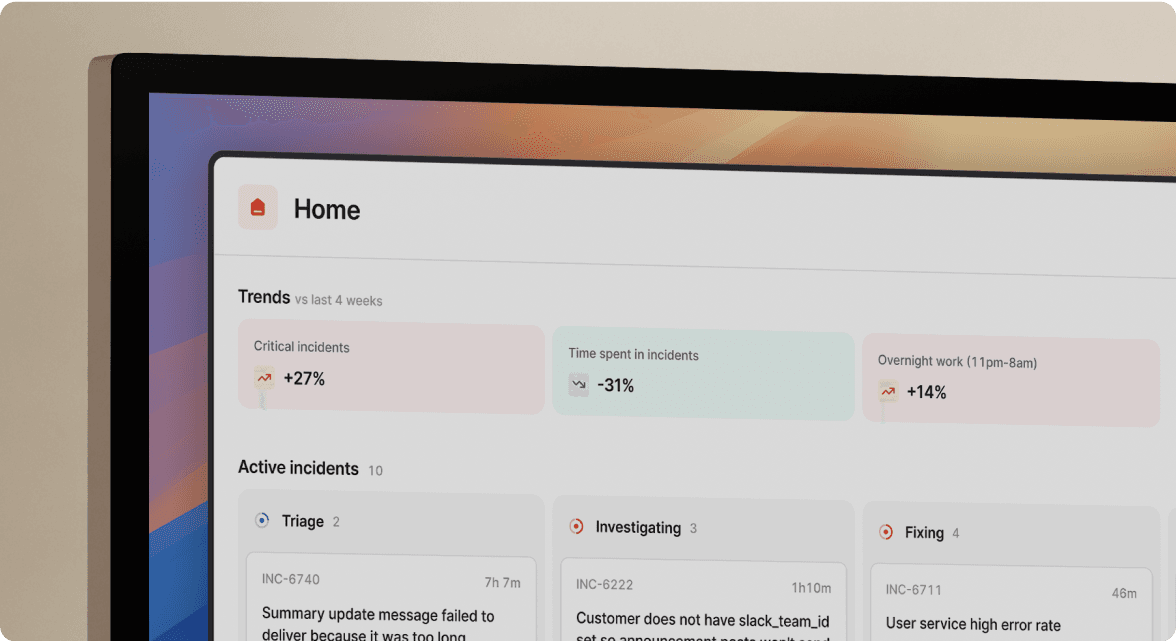Mastering incident routing: a critical component in incident management

Imagine this: a high-priority alert is triggered, but it’s routed to the wrong team, or delayed by manual triage. By the time the right person is notified, the issue has escalated, and users are starting to notice. Technical failures don’t always cause these kinds of incidents. More often, they stem from something simpler: poor alert routing.
For site reliability engineers, getting incident routing right is one of the most impactful ways to improve response time, reduce confusion, and build a reliable system. And increasingly, the best routing strategies are powered by deeper service context.
Why routing is essential to incident management
At its core, incident routing ensures that the right people are notified at the right time. That may sound simple, but in a fast-moving engineering org with distributed teams and complex systems, it is anything but.
Good routing shortens the time it takes for someone to acknowledge an alert, known as mean time to acknowledge (MTTA). When alerts are sent immediately to the right people, your response begins faster. That alone can limit the scope and impact of an incident.
Clear routing also reduces noise. When alerts are misrouted, they can be ignored, misdiagnosed, or left unacknowledged. When they reach the right team on the first try, engineers stay focused on what matters and avoid alert fatigue.
Finally, routing reinforces accountability. When alerts consistently go to the people who own the affected systems, there’s no ambiguity around who should act. That builds confidence and eliminates the “Who’s looking at this?” moment during a live incident. Tools like dynamic status pages or automated stakeholder updates make it easier to keep everyone in the loop, without extra comms overhead.
How to build better routing with context
Improving incident routing doesn’t mean redesigning your entire incident process. It starts by embedding better context into how alerts are processed and delivered.
The first step is having a clear understanding of your infrastructure—what services exist, how they relate, and who owns them. Without this, routing is guesswork. This is exactly where the incident.io Catalog comes in. Catalog provides a central place to track services, teams, dependencies, and metadata, all connected to your incident response process. When an alert fires for a given service, Catalog makes it immediately clear who’s responsible, enabling automated routing with high accuracy.
This context becomes even more powerful when paired with modern observability tools. Platforms like Grafana, Datadog, and Honeycomb generate rich, structured alerts that include service name, environment, and severity. When these alerts are connected to incident.io, Catalog helps translate that metadata into action by identifying the owning team and automatically routing the alert to the right Slack channel, on-call engineer, or escalation policy.
Routing logic should be built with flexibility. Think about incident type, severity, and time of day. A non-critical API degradation might route to the owning team during business hours, but a critical production failure should always escalate to the on-call responder. Visualising this as a decision tree can help clarify your logic and highlight any gaps in coverage.
It’s equally important to keep your on-call schedules accurate. A great routing setup fails if alerts are sent to someone who is off shift or unavailable. Ensure your system syncs real-time availability and handles shift changes gracefully.
Finally, treat routing as something that evolves. After an incident, review how well routing worked. Did the alert reach the right team? Was there delay or confusion? These are valuable inputs for refining your rules. Routing should improve over time, just like the rest of your incident process.
Putting it into practice
Strong incident routing is a critical part of modern incident management. It helps you respond faster, eliminate confusion, and reduce the overhead of coordination. But effective routing is only possible when it’s built on a foundation of clear, accurate service ownership.
By integrating observability platforms with your incident management process, and using Catalog to supply real-time service context, you can make routing smarter and more reliable. The result is fewer misfires, faster response times, and a team that always knows what they own, and what they need to fix.
Looking to level up your incident process? Explore how incident.io Catalog connects ownership and automation, or check out our practical guides on tooling integrations and running better post-incident reviews. Each improvement compounds, making your team better prepared for the next alert that comes through.

See related articles
So good, you’ll break things on purpose
Ready for modern incident management? Book a call with one of our experts today.

We’d love to talk to you about
- All-in-one incident management
- Our unmatched speed of deployment
- Why we’re loved by users and easily adopted
- How we work for the whole organization



